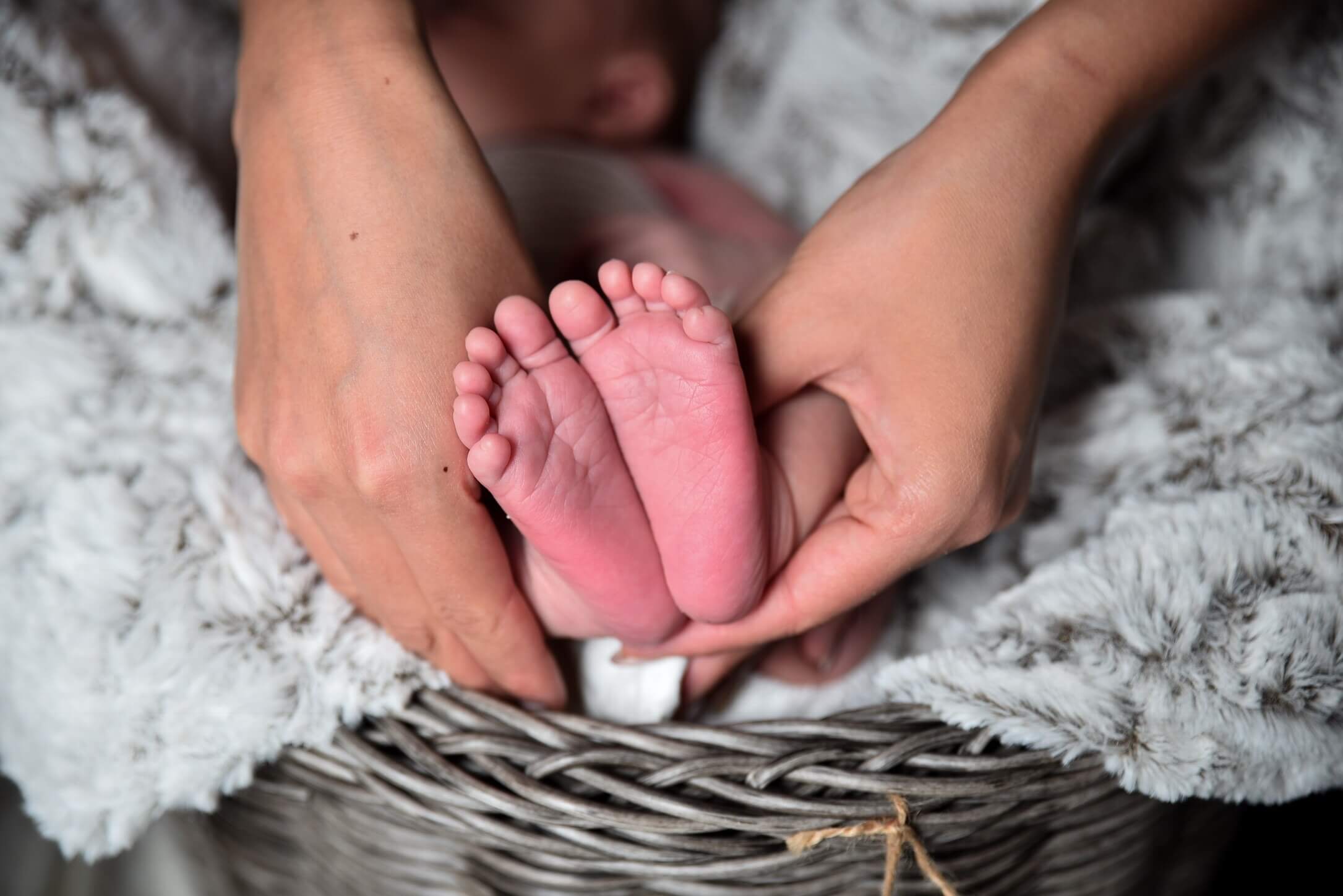January 27, 2022
June 27, 2019
Pregnancy vocabulary in Spanish, particularly many related to childbirth, are quite similar between English and Spanish because of their medical terminology. Still, I had to tearfully tell my mother that I did not want her present at my birth because of the language barrier. Even though I had done my due dilligence and learned the words I’d need to know, and I had my Spanish husband with me, my number 2 would have been my mother-in-law, who’d done twice us much research as I had!
Below is a list of common Spanish baby words for every expat mother in Spain. While not a complete list, it includes those words most commonly used during delivery and the postpartum period.
Spanish Pregnancy Vocabulary You Need to Know
Alumbramiento - Delivery of the placenta. Although you might think this word signifies that your child or children has arrived, it’s actually the word to describe the delivery of your placenta.
Baja maternal / paternal – maternity and paternity leave in Spain. Unlike my home country, women in Spain get paid leave! If you’re employed in Spain, you are entitled to 16 weeks of paid maternity, to which you can also tack on vacation time and even up to 15 natural days for nursing. Fathers on baja paternal get eight weeks as of April 1, 2019, two of which must be taken immediately after birth. Post-birth planning in Spain is usually talked about with your employer in the late second trimester
Cesárea or parto por cesarea - Cesarean section or C-Section. The medical term given to a surgical birth, which can be planned (programada) or spontaneous, depending on the circumstances. They’re quite common in Spain, with nearly 25% of live births needing surgical means for success. Speak to your healthcare provider about your concerns and ask about the rates for C-sections at the hospital where you plan to deliver.
Contracciones - contractions. Pre-birth cramping that usually begins with labor. Much like their English equivalent, pre-childbirth contractions that happens from 30 weeks or so are called Braxton Hicks after the doctor who first named them. Similarly, many women experience contractions after giving birth when their uterus is shrinking to its pre-birth size, often called intuertos.
Cuarentena - the period last six weeks after birth. Though the literal translation is quarantine, this is the recovery time for the mother, both mentally and physically.
Cuello (uterino) - cervix. You will have your cervix’s height inspected and measured at your appointments to determine whether or not you are at risk for preterm labor and even to see if you’re in labor. This word gets tossed around a lot at prenatal classes!
Dar a luz - to give birth. A flowery way of naming the actual birth of your infant, as opposed to parto or the verb parir. To give light makes it sound less painful than it actually is.
Depresion posparto - postpartum depression. Often confused with the “baby blues,” many women experience feelings of inadequacy and are overwhelmed with their new role. While there are many levels, this condition can be dangerous when it impairs your ability to care for yourself or your baby. Seek medical attention immediately if you feel you may harm yourself or your newborn; I had a six-week check up with my midwife to talk about how I was feeling.
Dilatacion / dilatar - cervical dilation / to dilate. The cervical dilation period is when your cervix begins to widen, sometimes called ripen in English, in preparation for delivery. Contractions help coax this into happening.
(Pre) Eclampsia - (pre)eclampsia. Eclampsia and preeclampsia are a serious complication of labor and delivery in which expectant mothers experience high blood pressure and seizures. You will be checked for signs of preeclampsia, such as increased protein in urine samples and sudden weight gain, during your routine neonatal checks. In the US, it is estimated that preeclampsia develops in 1 of every 200 women.
Embarazo de Riesgo – High-risk pregnancy. Women in Spain are considered high-risk pregnancies if they are over 35 years old, have a history of one or more miscarriages, are carrying multiples or have certain medical conditions, such as diabetes or high blood pressure.
Epidural / parto medicado - epidural / medicated birth. Maybe it’s a cultural thing, but medicated births are quite normal in Spain. Women are now beginning to ask for a walking epidural, usually referred to as “el walking.” Note that laughing gas is not offered at hospitals with the exception of a few public hospitals in metropolitan areas.
Episiotomia - episiotomy. Many first-time mothers may experience an episiotomy, which is a surgical tearing of the perineum area. After the placenta delivery, your doctor will likely stitch you up with dissolvable stitches, though you’ll want to take special care of this area until your first check up. Perineal massages can help lower your risk of an episiotomy.
Fecha del Parto – Due Date. This will be 40 weeks after the first day of your last missed period. Note that trimester (trimestre) and weeks (semanas) are important buzzwords, and that your baby’s gestational age is considered week+day, such as 11+4. Colloquially, most will say, salir de cuentas.
Forceps - forceps. Used in the delivery phase to help guide a baby’s head out of the vaginal cavity, this is both an instrument and a way to call an assistant vaginal birth.
Inducción al parto - labor induction. When an OBGYN deems it necessary, a woman might be induced, meaning that the labor is started medically. Most often, this is with pitocin, a hormonal cream that is inserted high in the cervix, but can also be when a doctor breaks the membranes (amniotic sac). I was induced one day after my due date due to low levels of amniotic fluid. This can also be called a parto provocado.

Lanugo - Lanugo. Lanugo is the soft, fine layer of hair that protects your baby while he or she is still in the womb. It is typically gone by birth except in the case of premature babies, and science still hasn’t uncovered exactly why babies develop it.
Liquido amniotico - amniotic fluid (AmE), bag of waters (BrE). The amniotic sac is full of a liquid that helps protect the fetus in development as well as train certain organs, like the lungs and kidneys. When you break waters, or romper aguas, you are in active labor.
Loquios – lochia. Once you have given birth, your body will continue to expel liquids, including blood and uterine lining. Brace yourself –the first few days aren’t pretty! The lochia will change from bright red to rusty brown to yellow and finally whit or clear, and this process generally takes a month. During this time, disposable or mesh underwear is your best friend.
Matrona – midwife. This is a person who can measure your weight and blood pressure on each check up, then note it done for your records, plus conduct your pre-birthing classes. Matronas are often present in the birthing room, and doulas are becoming more and more common as women are choosing non-medicated births.
Lactancia - period of nursing / breastfeeding. Breastfeeding is commonplace and encouraged in Spain, so don’t worry about covering up while you feed your baby! Colloquially, women also use dar el pecho and amamantar.
Monitores - heart rate monitors. From your eighth month, you may be asked to get hooked up to these machines that register both your baby’s heart rate and whether or not you’re having contractions. This exam will get repeated at 39 weeks, at 40 weeks and after an induction or going into labor.
Paritorio - labor and delivery room. Not ones to overcomplicate terms, this is the brutish word used to describe the room where you do active labor after you’ve fully dilated. Many hospitals in Madrid now have paritorios with more than just the potro (see below) and will allow you to give birth in positions that favor gravity, such as laying on your side or on all fours.
Parto - birth. Though this singular moment has so many different names (such as one that literally means to give light), this word actually refers to the moment your baby is born. There are multiple forms – de múltiples (multiples), de nalgas (breech position), natural (vaginal).
Perineo - perineum. The space between your vulva and your anus, the perineum is one of the hardest workers during delivery because it must stretch to allow your baby to be born vaginally. Your midwife may suggest perineal massages to help relax and stretch the area prior to childbirth; this area will experience a degree of trauma in nearly every delivery.
Piel a piel - skin to skin contact. Science says that your baby responds better when you hold him or her on your chest immediately after birth, so instead of whisking your baby away, most doctors will suggest skin to skin in healthy deliveries. I was able to do two uninterrupted hours before the doctors took Enrique away for tests - and I could finally eat!
Pitocin - pitocin drug. This drug mimics oxytocin, the hormone that stimulates labor, and can be used to either kickstart labor or make it (meaning, contractions) more intense. Like any medicine, there are risks and side effects so speak to your doctor about laboring and whether s/he thinks you may need the drug.
Placenta - placenta. Even though the word and functions are the same in both English and in Spanish, your placenta deserves three cheers for the work it does during nine months!
Plan de parto - birth plan. Midwives these days will push for you to plan your perfect birth, knowing that there’s a chance that you may have to alter it. And many hospitals are opting for a patient-priority birth, so speak to your partner and health care provider but remember that things may not go according to plan.
Posparto - postpartum. New moms will see that their lives are cosmically different after childbirth, so posparto is everything that comes after childbirth for us. Medically speaking, the posparto or puerperio is the six weeks after childbirth where the mother recovers. This period is also called the cuarentena.
Potro - birthing bed. You know how you see women in films with their legs up in stirrups and sweating as they push the baby out? This particular, adjustable bed is known as a potro. Fun fact: it’s also the word for foal and pommel horse or vault.
Pujos - pushing stage. At this stage of labor, which typically lasts 20 minutes to 2 hours, you will be instructed to push (empujar) when your uterus contracts. Nearly there!
Recien nacido - newborn. Doctors will usually refer to your new baby as a recien nacido rather than an infante. Infante is the word for prince in Spanish!
Romper aguas - to have your water break / break waters. Little did I know that this is a part of the birthing process when you’re dilating (dilatar), and not that holy-crap-here-it-comes moment you see in movies. You may need this done for you by a doctor.
Tapón mucoso - mucous plug. This is the sticky goo that protects the placenta, located high up in the vagina: losing it often signals that labor can begin at any time.
Test de Apgar – Apgar Scale. A test administered on newborns to determine their rate of survival and whether medical intervention is needed, the Apgar stands for appearance, pulse, grimace response, activity, respiration. Newborns are scored from 0-2, with two being the highest; 7 of 10 is considered a healthy baby. Your newborn will have the Apgar performed twice: once at 1 minute after birth and again at 5 minutes after birth.
Unidad de Cuidados Intensivos (UCI) Neonatal - Neonatal ER. Not all hospitals will have a neonatal unit, so if you’re concerned about complications or have a risky pregnancy, consider giving birth at a hospital that does have one. If not, you’ll be transferred if complications do arise.
Ventosa - suction cup (used in assisted vaginal births). The ventosa is an instrument that resembles a vacuum and is used in vagnal births that need intervention. When the baby is crowning, the doctor will affix the vacuum to your baby’s head to help move him out of the birth canal. Be prepared for your baby’s head to resemble a cone for a few hours, but as their skulls are quite malleable, this will disappear.
Vernix caseosa – vernix caseosa. Stemming from the Latin word for cheesy, this protective, waxy covering present on newborns during birth is believed to protect their skin while in utero and during childbirth.
As I prepare for a second delivery in Spain this summer, I realize how wildly in the dark I was about many of the medical terms and complications that could have arisen with my first birth. I trusted in the competence and expertise of the doctors and ultimately chosen an OBGYN who walked me through every stage and kept her cool when the epidural didn’t drain to my right leg (I couldn’t feel anything on my left side but could feel contractions on my right) or when the suction cups were used.
I feel more empowered to ask about risks and returns of childbirth my second time around – but already have my mother-in-law on speed dial for when I go into labor. Still, this pregnancy vocabulary list will come in handy! Check out the useful guide below on maternity healthcare costs:
|
If you are searching for health insurance in Spain, Caser Expat Insurance has the right policy for you!
|
.png?width=344&height=67&name=logo_caser%20(2).png)




%20copia.webp)




Let Us Know What You Thought about this Post.
Put your Comment Below.